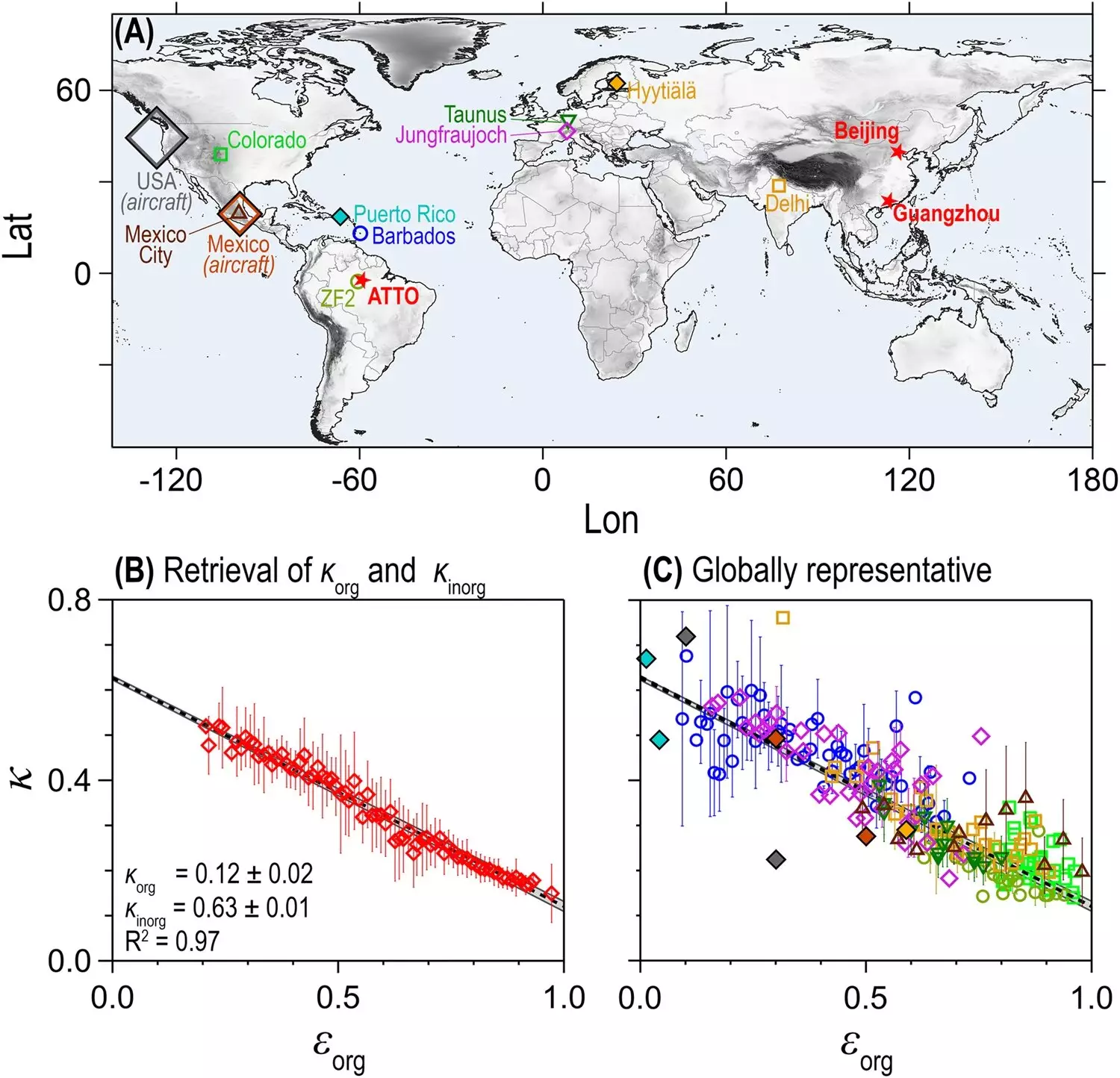Aerosol particles have a significant impact on the Earth’s climate, and understanding their role is crucial for accurate climate modeling and forecasting. The hygroscopicity of aerosol particles, which refers to their capacity to hold water, is a key factor in determining their climate effects. The hygroscopicity of aerosol particles depends on various factors such as size, chemical composition, and atmospheric variability. In a recent study published in Nature Communications, an international research team led by the Max Planck Institute for Chemistry and the Leibniz Institute for Tropospheric Research has made significant progress in understanding the relationship between the chemical composition and hygroscopicity of aerosol particles.
Through extensive investigations and data analysis, the research team has developed a simple linear formula that relates the chemical composition of aerosol particles to their hygroscopicity. The study showed that, on a global scale, hygroscopicity is primarily determined by the proportion of organic and inorganic materials in the aerosols. By measuring hygroscopicity through cloud condensation nuclei measurements and analyzing the chemical composition through aerosol mass spectrometry, the researchers were able to derive a formula that captures the relationship between hygroscopicity and the share of organic materials and inorganic ions in aerosol particles: κ = κorg * ρorg + κinorg * ρinorg. This formula simplifies the consideration of hygroscopicity in climate models and reduces the uncertainties associated with aerosol-climate interactions.
To validate their findings, the research team evaluated data from 16 measurement campaigns conducted between 2004 and 2020. These campaigns covered diverse regions and climate zones, including the Amazon rainforest, metropolitan areas in Asia with high air pollution, and the boreal pine forest in Europe’s Arctic Circle. By analyzing data from different geographical locations and climate conditions, the researchers demonstrated the general applicability of the simplified linear formula. The formula successfully captured the hygroscopicity of aerosol particles, even considering the complex chemical compositions of organic matter.
The development of a simplified linear formula for estimating aerosol hygroscopicity has important implications for climate modeling and forecasting. By using the global aerosol climate model ECHAM-HAM, the researchers tested the new formula and determined that simplified assumptions about hygroscopicity did not significantly impact the model’s results. This means that investigations and forecasts related to climate change can now be more reliable, as the uncertainties associated with aerosol-climate interactions are reduced. The findings of this study contribute to a better understanding of the complex interactions between atmospheric aerosols, solar radiation, and cloud formation.
Despite the progress made in understanding the relationship between aerosol particles and climate change, several challenges remain. The interactions of atmospheric aerosols with solar radiation and clouds are still not fully understood and represent one of the greatest uncertainties in climate modeling. The hygroscopicity of aerosol particles, although simplified by the new formula, still poses unanswered questions due to the complexity of their size and chemical composition. The ability of aerosol particles to hold different amounts of water is crucial for their role in scattering solar radiation and forming cloud droplets, both of which have significant implications for the Earth’s energy balance.
The research conducted by the international team of scientists led by the Max Planck Institute for Chemistry and the Leibniz Institute for Tropospheric Research has advanced our understanding of the relationship between aerosol particles and climate change. By developing a simplified linear formula that relates the chemical composition of aerosols to their hygroscopicity, the researchers have made significant progress in reducing uncertainties associated with aerosol-climate interactions. This formula can now be incorporated into climate models to improve the accuracy of climate change forecasting. While challenges still remain, this study represents a crucial step forward in better comprehending the complex role of aerosol particles in shaping our climate.



Leave a Reply